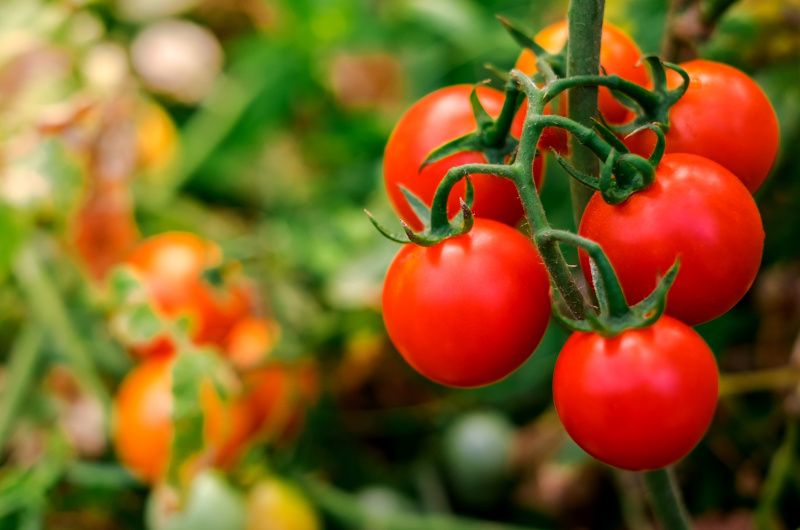How To Grow Tomatoes
Tomatoes are undoubtedly one of the most popular and rewarding crops for home gardeners. Their versatility in various dishes, vibrant colours, and juicy flavours make them a staple in kitchens around the world. If you’ve ever wondered how to grow tomatoes successfully, this comprehensive guide will walk you through the entire process, from selecting the right tomato plants to harvesting a bountiful crop. With a little care, attention, and the right techniques, you’ll be enjoying your very own homegrown tomatoes in no time.
Selecting the Right Tomato Plants
The journey to a successful tomato crop begins with choosing the right tomato plants. There are numerous varieties of tomatoes available, each with its unique characteristics and growth habits. Determinate varieties tend to be more compact and suitable for limited garden space, while indeterminate varieties grow vigorously and require more space and support.
Consider the climate of your region and the available space when selecting a variety. Plum tomatoes are ideal for making sauces and pastes, while large beefsteak tomatoes are perfect for slicing and salads. Make sure to choose disease-resistant varieties to combat common issues like tomato blight and other plant diseases.
Starting from Seeds: Sowing the Seeds
To start your tomato-growing journey from scratch, you can sow seeds indoors several weeks before the last frost date in your area. Sowing seeds indoors allows you to control the early stages of growth and ensure a longer growing season. Fill seed trays or small pots with a seed-starting mix and sow the tomato seeds about a quarter-inch deep. Place the trays in a warm, well-lit area and keep the soil consistently moist.
As the seedlings emerge and develop their first true leaves, they’ll be ready for transplanting. This typically happens when the risk of frost has passed and the plants are around 6-8 inches tall.
Transplanting Tomato Seedlings
Before transplanting, it’s essential to harden off the young tomato plants. This means gradually exposing them to outdoor conditions to prevent shock. Start by placing them in a sheltered spot outdoors for a few hours a day, gradually increasing the time and exposure to direct sunlight.
Choose a sunny location in your garden with well-draining soil enriched with plenty of garden compost. Transplant the seedlings deeply, burying a significant portion of the stem along with the root ball. This encourages the development of strong roots along the buried stem, leading to healthier and more robust plants.
Using Tomato Plug Plants or Grow Bags
If starting from seeds seems a bit too challenging, you can opt for tomato plug plants available at garden centers. These pre-grown young plants are a great way to kickstart your tomato-growing season. Transplant them following the same guidelines mentioned earlier.
Alternatively, if you have limited space, consider using grow bags or containers to cultivate your tomato plants. These provide excellent drainage and are particularly suitable for patios, balconies, or small gardens.
Supporting Your Tomato Plants
As your tomato plants grow, they will require support to prevent them from sprawling on the ground and getting damaged. Insert stakes or install trellises when you transplant the seedlings to their final spot. Gently tie the main stem to the support using soft twine or plant ties.
Pinching off Side Shoots for Optimal Growth
Tomato plants often develop side shoots, also known as suckers, in the leaf axils. While these shoots can produce fruit, they can also divert energy from the main stem, affecting overall productivity. Pinching off these side shoots will encourage the plant to focus its energy on fruit production. Use your fingers or small pruners to remove them when they’re still young and tender.
Watering Techniques: Finding the Right Balance
Proper watering is crucial for healthy tomato plants. Too much water can lead to root rot and other diseases, while too little water can result in stunted growth and fruit problems. Aim to keep the soil consistently moist but not waterlogged. A good rule of thumb is to water deeply once or twice a week, allowing the top inch of soil to dry out between waterings.
Mulching Around Tomato Plants
Mulching around your tomato plants offers several benefits. It helps retain moisture, suppresses weed growth, and prevents soil-borne diseases from splashing onto the plants during rain. Organic mulches like straw or wood chips work well for tomatoes. Apply a layer of mulch around the base of the plants, leaving a few inches of space around the stem to prevent stem rot.
Addressing Common Tomato Plant Issues
Tomatoes are susceptible to various problems, including pests and diseases. Tomato blight, a fungal disease that affects leaves and fruit, is a common concern. To prevent blight, avoid overhead watering and provide adequate spacing between plants for proper air circulation. Applying fungicides may also help control the spread of blight.
Keep an eye out for signs of magnesium deficiency, which is evident through yellowing leaves with green veins. To remedy this, you can add Epsom salt to the soil to provide the plant with the necessary magnesium.
Harvesting Your Tomato Crop
The best bit of growing tomatoes is, of course, enjoying the fruits of your labour. Tomatoes are typically ready for harvest when they’ve reached their mature color and are slightly soft to the touch. Gently twist or use pruners to detach the ripe tomatoes from the stem. If you have an abundance of tomatoes that ripen simultaneously, consider making sauces, soups, or even freezing them for later use.
End of the Season: Harvesting the Last Tomatoes
As the growing season comes to an end, you might notice that some tomatoes haven’t fully ripened on the vine. To maximize your yield, you can carefully uproot the entire tomato plant and hang it upside down in a dry, well-ventilated area. This method, known as “green tomato harvesting,” allows the remaining fruits to ripen gradually.
Mycorrhizal Fungi for Enhanced Growth
For even better results, consider introducing mycorrhizal fungi to your tomato plants. These beneficial fungi form symbiotic relationships with the plant’s roots, aiding in nutrient absorption and overall growth. Many gardening centers offer mycorrhizal fungi products that you can apply during transplanting.
Conclusion
Growing tomatoes is a rewarding experience that requires a blend of care, patience, and the right techniques. From selecting the appropriate tomato plants for your climate and space to addressing common issues like tomato blight and magnesium deficiency, this guide has covered the essential steps to help you cultivate a successful tomato crop. Remember that gardening is an ongoing learning process, so don’t hesitate to experiment and adapt these tips to suit your specific conditions. With dedication and attention, you’ll be enjoying a bountiful harvest of delicious homegrown tomatoes from early summer to the end of the season.



